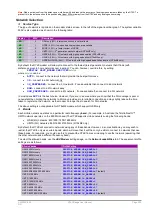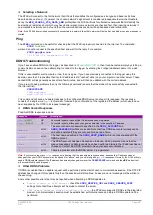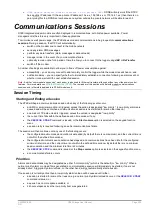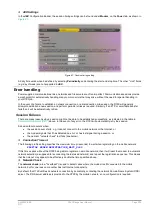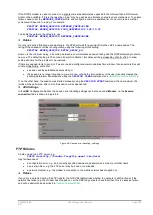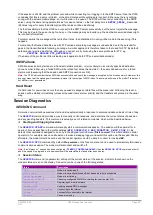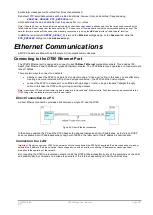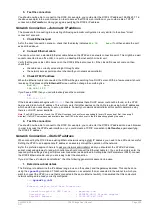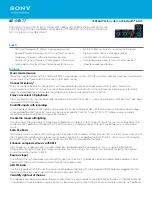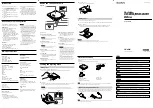
UM-0085-B09
DT80 Range User Manual
Page 221
RG
Selecting a Network
The
DT80
will connect to the first network that it finds that satisfies the configured service type and band restrictions
described above (if any). If, however, the chosen network's signal level is considered inadequate (below the threshold
set by the
MIN_SIGNAL_FOR_DATA_DBM
profile) then the
DT80
will look for alternative networks that still satisfy the
service/band restrictions but which may have better signal. Home networks are checked first, then roaming networks. If
no acceptable networks can be found then the communications session will be abandoned and retried later.
Note:
if the
DT80
has previously successfully connected to a network, then that network will be the first one tried when a new session is
started.
Ping
The
PING
command can be useful for checking that the
DT80
is properly connected to the Internet. The command:
PING
hostname
will send an echo request to the specified host and wait for the reply. For example:
PING google.com
72.14.204.104 responded in 272 ms
DDNS Troubleshooting
If you have enabled DDNS on the logger, as described in
, then it can be tested simply by starting a
communications session, then attempting to connect to the logger by entering the configured domain name into a web
browser.
If this is unsuccessful, wait a minute or two, then try again. If you have previously connected to the logger using this
domain name then it is possible that its old IP address is still "cached" either on your computer or another server. These
cached DNS entries generally expire after a few minutes, and will then be updated with the correct address.
If you are still having problems then try the following command (ensure that the modem has successfully connected to
the Internet first):
DDNSUPDATE
DDNS response:
good 123.209.62.155
This command will send an update message to the configured DDNS server and report its response. The response
consists of a single word (
good
in this case), followed by a confirmation of the registered IP address (which would have
been supplied by the
DT80
in its request message).
DDNS Server Responses
Possible DDNS responses include:
Response
Status
Description
good
ip-addr
OK
Successful update; the specified IP address has been registered
nochg
ip-addr
OK
Successful update, although no change was detected in the specified IP address
badauth
error
The account name or password specified in the
DDNS_ACCOUNT
and
DDNS_PASSWORD
profiles are invalid. Note that free DDNS accounts typically expire
and will be deleted if they are not used for a period of time.
nohost
error
The host name specified in the
DDNS_HOST_NAME
profile is not associated with the
DDNS account.
abuse
error
The DDNS account has been blocked due to abuse, which generally means that too
many unnecessary update requests have been performed (where the IP address has not
changed). Contact the DDNS provider to have your account unblocked.
911
error
There is a problem with the DDNS server. Try again later.
Note:
If you receive too many
nochg
responses (indicating that the requests were unnecessary, because the IP address has not
changed) then your DDNS account may be blocked for "abuse" and you will start getting
abuse
responses. Normally, the
DT80
will only
send a DDNS update request if its IP address has actually changed; however the
DDNSUPDATE
command and the
dEX
modem test
will unconditionally send a request.
Other DDNS Problems
If DDNS is enabled then an update request will be performed at the start of each communications session, if the
DT80
IP
address has changed. If this update fails then the session will still continue; however an error message will be written to
the event log.
Some other possible errors that may be reported when attempting a DDNS update are:
•
Cannot connect to DDNS server
– check the
DDNS_SERVER_URI
and
DDNS_SERVER_PORT
settings. Note that three attempts will be made to contact the server.
•
DDNS update aborted. Modem interface not open
– the
DT80
only supports DDNS via the integrated
modem. A communications session must be established, with Internet access, before a DDNS update can be
performed.














